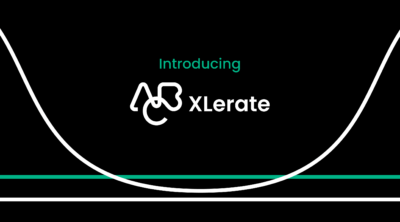The gym and health club industry is undergoing a massive transition. While it’s a highly lucrative one generating around $96.7 billion in global profits in 2019, it’s also one of the most threatened industries after the covid-19 pandemic.
In order to remain profitable and competitive, you need to understand the dynamics that make a business successful.
And for that, you must recruit every advantage that you can get, especially when it comes to digitalization. Key performance indicators (KPIs) are something that every small business owner needs to familiarize themselves with to increase their bottom line.
If you don’t know what that is or what parameters you need to be tracking for your gym, then you’re in the right place. In this article, we will go through what key performance metrics are, how you should track key metrics in your business and what metrics you need to be tracking.
Skip ahead to:
- What are key performance indicators (KPIs)?
- Why should you track key metrics for your fitness business?
- ey metrics you need to track as a fitness business owner
What are key performance indicators (KPIs)?
Key performance indicators (KPIs) mean the top tactical parameters you identify for your business.
These are the main operating markers that can help your gym or health club reach its business goals. Whether that’s higher member retention, employee performance feedback, or customer satisfaction.
KPIs are the vital signs of your business’s performance. These give you feedback on the company’s performance and overall condition in statistical figures.
Important metrics can be general or highly specific. These make your business and marketing information quantifiable and easier for you to take action on. That can help guide you in streamlining basic business processes by showing you what’s working for your brand.
KPIs can help shed light on many different aspects of a fitness business. Online sales, customer satisfaction, employee satisfaction, and better customer retention are some of the main ones.
They can help you keep track of spending and earnings in any specific period of time. And even pinpoint your most successful marketing campaigns to date.
Why should you track key metrics for your fitness business?
The business model of gyms and health clubs is unique, and so are the challenges facing them. You can find solutions much faster when you have calculable information at hand instead of theoretical guesses that can potentially be a drain on valuable resources.
When you see information in the form of numbers and figures, it’s easier to know what’s working and what isn’t. KPIs help companies focus on the approach that has proven to be most successful for their unique business structure.
The cost of goods and the cost of customer acquisition is rising globally. Small businesses are struggling to maintain a profitable bottom line.
Tracking and understating KPIs is even more essential in this business climate. By doubling down on what’s profitable, you can use your cash flow, time and manpower much more wisely to achieve your business goals. It can save you a lot of hassle and wasted resources.
KPIs also help better prepare businesses for future disruptions. Instead of taking the more passive approach, they allow you to be proactive.
Planning ahead and having contingency plans ready for your gym before any scenario actually unfolds becomes clear-cut with KPIs. When you have these numbers tracked and readily available to you, you can foresee any dips or inadequacies in the future.
That can help keep you a few steps ahead of the competition and keep your gym’s performance above average even in troubling times.
Top key metrics you need to track as a fitness business owner
We’ve divided the key metrics into five categories to help you understand the important KPIs you need to track as a fitness business owner:
Performance metrics
Performance metrics shed light on your business performance and help avoid pitfalls like reduced productivity and in-efficient use of resources. Here are the KPIs you need to track in this category:
Customer lifetime value (CLV)
CLV is the total financial substance obtained by your business from a customer over the entire phase of their dealings.
This metric helps improve customer retention. It costs anywhere between 5-25x less to maintain existing customers than it does to recruit new ones. This KPI is also a good gauge of customer satisfaction, the average length of membership and churn rates.
Website traffic
Websites double as a source of revenue and advertisement for most modern gyms. This metric calculates the success of your search engine optimization, increase or decrease in website traffic, number of customers visiting your page, and click rate. It can help you drive more traffic to your website and enhance revenue generation from it.
Conversion rate
This metric tells the effectiveness of your sales team and marketing efforts. It provides essential pointers on how many potential leads you could convert into new customers in a given period.
Conversion rates can be influenced by many factors including your gym size, customer base, and your sales ability.
Average class attendance (ACA)
Every empty class spot in your gym means lost revenue. ACA helps establish the break-even and productivity of each class thus helping you readjust instructors and class size, and reschedule future classes to increase efficiency.
This KPI is a critical indicator of the profit/loss of your gym as a whole.
Marketing metrics
Marketing metrics provide data regarding your marketing efforts including:
Social media
Metrics tracking social media help determine the productivity of your social media marketing campaigns. The action taken by the average customer on any advertising effort is a key display of its success. Metrics tracking social media are essential to guide your marketing team on what to double down on.
Net promoter score
Net Promoter Score is a customer satisfaction metric determined by quizzing customers on the probability of them recommending your product and services to others on a scale of 0-10.
The Customer
Engagement Playbook
for Your Fitness
Business
Discover more That’s important because it provides you with an understanding of customer relationship quality and any pain points the consumer might be experiencing.
Qualified leads
A qualified lead is a potential customer. Someone who has shown interest in being a member of your gym and has been qualified as a prospect worthy of further marketing efforts.
This metric is important to track for fitness businesses because it allows your sales team to know how many leads are actually turning into customers.
Business metrics
These metrics can help you improve and streamline your business processes and give feedback in real-time about the finances of your company.
Customer acquisition cost (CAC)
CAC metric evaluates the amount you spend to acquire a new customer. It gives you a total number after adding in the cost of sales, marketing, and equipment – all that it took to convince a customer to buy your product or service.
This makes profit/loss figures simpler to work out for your business.
Return on investment
ROI is an extensively used financial metric for assessing the odds of gaining a profitable return from an investment. This ratio compares the advantages and disadvantages of an investment relative to its cost.
This metric allows you to make more educated investment decisions by providing essential data on the effectiveness of previous investments.
Membership usage
This metric calculates the frequency with which each member uses their gym membership in a given period. You can use this information to identify ways to get infrequent members to come to the gym more frequently.
It’s also helpful in determining how many new members the gym can accommodate.
Additional service revenue per customer
This metric calculates bonus revenue streams aside from the membership fee.
It measures any supplementary spending of members on services that aren’t included in membership fees. That could include spendings on health supplements, detox drinks, or spa services. This revenue adds an essential compounding effect to help pad your bottom line.
Financial metrics
Metrics providing statistics on the financial aspects of a business can help you in making better financial calls and preventing loss. Some key financial metrics to track for gyms are:
Sales revenue
This metric computes the profits you make from various sales revenue streams of your business in any given time frame. It includes total sales of memberships, services, and products.
It tells how much money your business is earning or losing and the reasons behind it. Thus helping you monitor your income and compare your expenses in all parts of your gym.
Revenue per session (RPS)
This is a relatively straightforward metric to track with huge compensations. RPS reveals how cost-effective each of your sessions is and also ranks classes and instructors for you. That can make it simpler to determine the most successful instructors, sessions, and timing for classes.
Gross profit margin
The gross profit margin metric indicates the fraction of sales revenue your gym has left over after covering all its costs of running the business.
That’s an important metric to track to keep the cash flow, input, and output of your business in check. Instead of having to rely on blind guesses, it aids you by giving real-time ratios of the worth of your brand.
Net profit margin
This KPI gauges how effective your investments are at helping your bottom-line grow and how much of that profit your company gets to keep.
This metric is a measure of the profitability of your business. It’s instrumental in helping small businesses make an array of long- and short-term financial choices.
Human resource metrics
Employees make up one of the greatest assets of your gym. Here are some chief metrics that help evaluate their productivity and satisfaction:
Employee retention rate
Your turn-over rate provides great insights into employee satisfaction.
It costs a lot to find, recruit and train new staff. Happier employees are more productive and loyal to your company. Tracking this KPI can help you decode what needs to be done to improve your employee retention rate.
Training costs
It’s an effective metric to track employees’ training costs. It can help you make smarter decisions on how much to invest in developing the skills sets of new hires. This metric provides ratios on return on training costs versus the initial investment made on an employee’s education or training.
Number of accidents
This metric takes into measure the number of reported incidents, damage to equipment and personnel, and loss of productivity resulting from an accident.
Having this information at hand is instrumental to better understanding safety measures and working towards creating better wellbeing benchmarks. Thus making your gym safer for members.
In summary
Tracing the aforementioned KPIs and making necessary adjustments based on the data they give back will help you keep a pulse on your business and steer it towards success.
You might be surprised by the clarity and streamlined ease that automated dashboards can provide for your gym.
Instead of wasting resources on counterproductive methods, check out how Glofox’s gym management software can help indicate the levers you need to pull to make your gym stand out from the competition.















